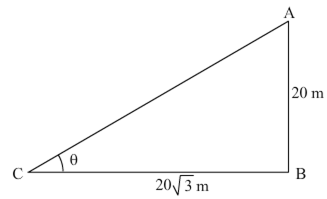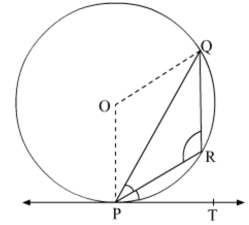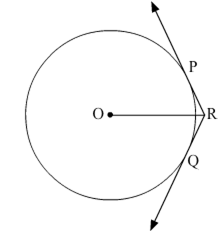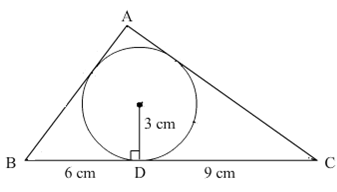 Short Answer Type
Short Answer TypeIn Given figure, a tower AB is 20 m high and BC, its shadow on the ground, is m long. Find the sun's altitude.
long. Find the sun's altitude.

The different dice are tossed together. Find the probability that the product of the two number on the top of the dice is 6.
In the given figure, PQ is a chord of a circle with centre O and PT is tangent. If ∠QPT = 60o, find ∠ PRQ.
In the given figure, two tangents RQ and RP are drawn from an external point R to the circle with centre O. If ∠PRQ = 120o, then prove that OR = PR + RQ.
In the given figure, a triangle ABC is drawn to circumscribe of radius 3 cm, such that the segments RD and DC are respectively of length 6 cm and 9 cm. If the area of ΔABC is 54 cm2, then find lengths of sides AB and AC.
In an AP, if S5 + S7 = 167 and S10 = 235, then find the AP, Where Sn denotes the sum of its first n terms.
The points A (4, 7), B (p, 3) and C (7, 3) are the vertices a right triangle, right-angled at B find the value of p.
Find the relation between x and y if the points A (x, y), B (-5, 7) and C (-4, 5) are collinear.